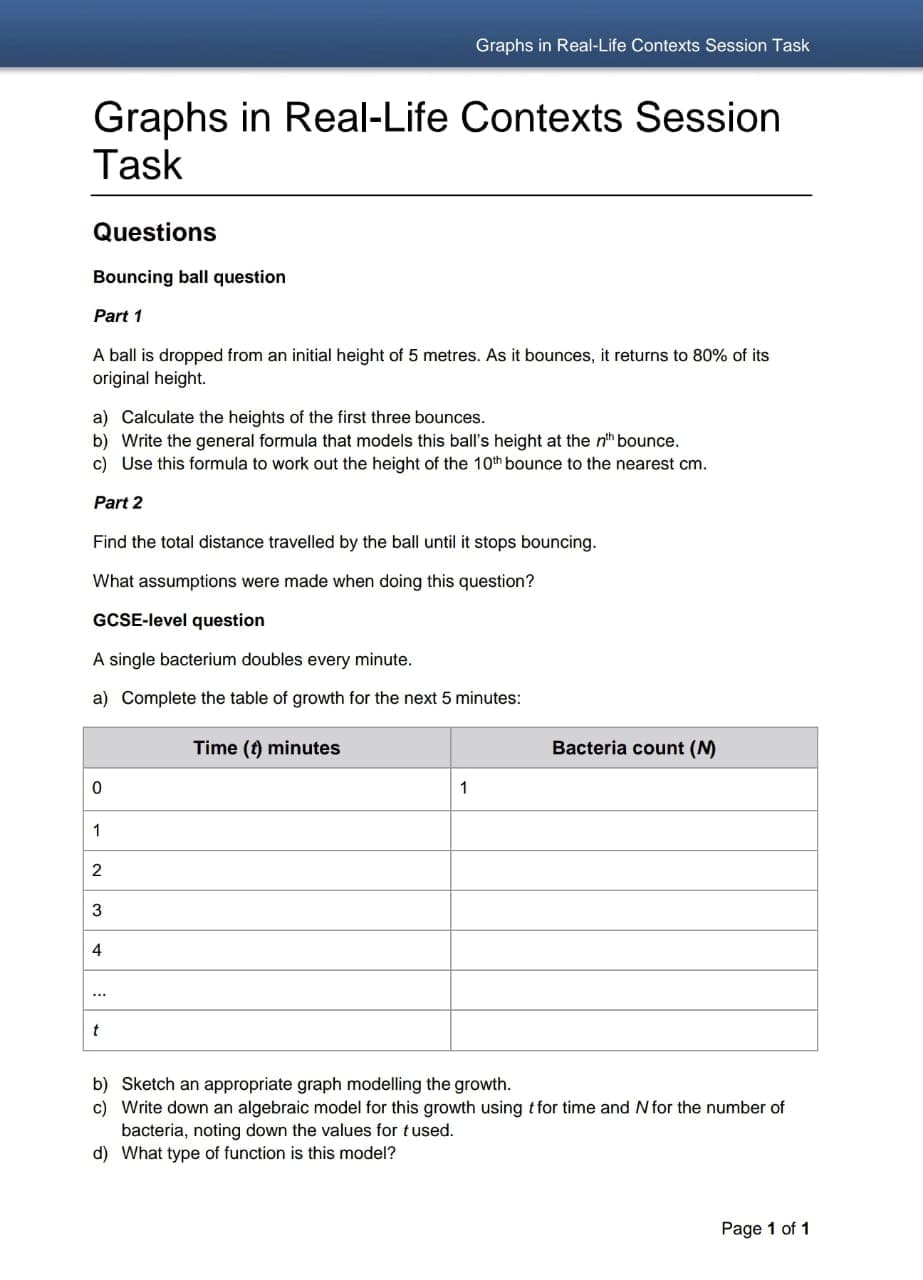Bouncing ball question Part 1 A ball is dropped from an initial height of 5 metres. As it bounces, it returns to 80% of its original height. a) Calculate the heights of the first three bounces. b) Write the general formula that models this ball's height at the n" bounce. c) Use this formula to work out the height of the 10th bounce to the nearest cm. Part 2 Find the total distance travelled by the ball until it stops bouncing.
Bouncing ball question Part 1 A ball is dropped from an initial height of 5 metres. As it bounces, it returns to 80% of its original height. a) Calculate the heights of the first three bounces. b) Write the general formula that models this ball's height at the n" bounce. c) Use this formula to work out the height of the 10th bounce to the nearest cm. Part 2 Find the total distance travelled by the ball until it stops bouncing.
Algebra & Trigonometry with Analytic Geometry
13th Edition
ISBN:9781133382119
Author:Swokowski
Publisher:Swokowski
Chapter5: Inverse, Exponential, And Logarithmic Functions
Section5.2: Exponential Functions
Problem 54E
Related questions
Concept explainers
Contingency Table
A contingency table can be defined as the visual representation of the relationship between two or more categorical variables that can be evaluated and registered. It is a categorical version of the scatterplot, which is used to investigate the linear relationship between two variables. A contingency table is indeed a type of frequency distribution table that displays two variables at the same time.
Binomial Distribution
Binomial is an algebraic expression of the sum or the difference of two terms. Before knowing about binomial distribution, we must know about the binomial theorem.
Topic Video
Question
Part 2

Transcribed Image Text:Graphs in Real-Life Contexts Session Task
Graphs in Real-Life Contexts Session
Task
Questions
Bouncing ball question
Part 1
A ball is dropped from an initial height of 5 metres. As it bounces, it returns to 80% of its
original height.
a) Calculate the heights of the first three bounces.
b) Write the general formula that models this ball's height at the nh bounce.
c) Use this formula to work out the height of the 10th bounce to
nearest cm.
Part 2
Find the total distance travelled by the ball until it stops bouncing.
What assumptions were made when doing this question?
GCSE-level question
A single bacterium doubles every minute.
a) Complete the table of growth for the next 5 minutes:
Time (t) minutes
Bacteria count (M)
1
3
4
...
b) Sketch an appropriate graph modelling the growth.
c) Write down an algebraic model for this growth using tfor time and N for the number of
bacteria, noting down the values for tused.
d) What type of function is this model?
Page 1 of 1
Expert Solution
This question has been solved!
Explore an expertly crafted, step-by-step solution for a thorough understanding of key concepts.
This is a popular solution!
Trending now
This is a popular solution!
Step by step
Solved in 3 steps

Knowledge Booster
Learn more about
Need a deep-dive on the concept behind this application? Look no further. Learn more about this topic, advanced-math and related others by exploring similar questions and additional content below.Recommended textbooks for you

Algebra & Trigonometry with Analytic Geometry
Algebra
ISBN:
9781133382119
Author:
Swokowski
Publisher:
Cengage

Algebra & Trigonometry with Analytic Geometry
Algebra
ISBN:
9781133382119
Author:
Swokowski
Publisher:
Cengage